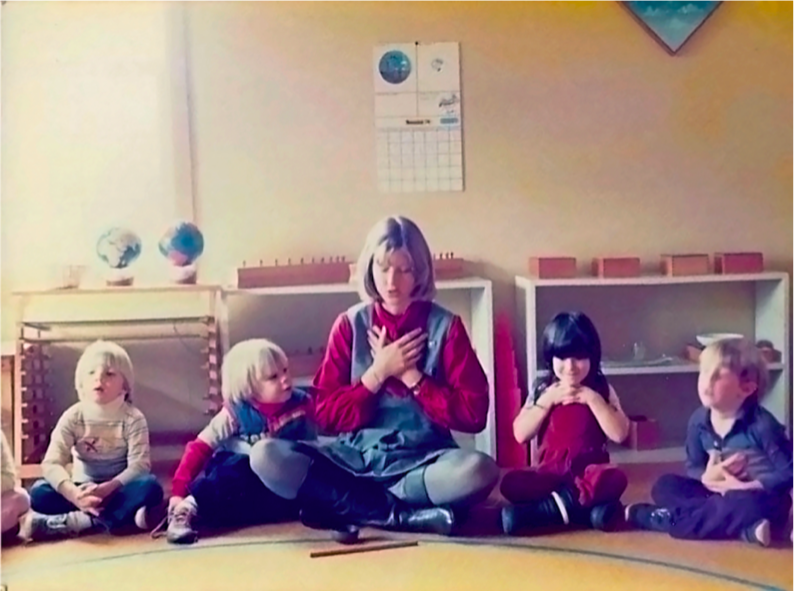In honor of Women’s History Month, we’re pleased to profile Mind & Life grantee and Fellow Tish Jennings, a pioneer in mindfulness and education and social-emotional learning whose research over two decades has fostered greater teacher well-being and more compassionate classrooms.

America faces a growing teacher shortage, made only worse by the pandemic. According to one estimate, up to 100,000 teachers are needed to meet current demand. One of the biggest factors fueling the teacher exodus is stress and burnout, particularly among educators working in low-income school districts.
But could the disruption caused by the pandemic spur the very changes needed to bring about much-needed education reform? Patricia (Tish) Jennings, a professor of Education at the University of Virginia, thinks the time is ripe for an education transformation propelled, in part, by teachers themselves. Two decades ago, Tish, with support from a Mind & Life Francisco J. Varela Grant, began researching how mindfulness practices could alleviate teacher stress, while improving the classroom climate and student learning behaviors. Now, in a new book, Teacher Burnout Turnaround (2021), she offers educators practical tools and new ways of looking at their roles in reforming outmoded systems.
A Research Journey Rooted in Lived Experience
Tish’s passion for applying contemplative science to challenges in education can be traced to her own experience as a teacher and meditator. Growing up in the ‘60s, in the shadow of the Vietnam War, she realized she wanted to do something to ‘make the world a better place.’ She liked kids and found a niche in education. Through working as a teacher and teacher educator, she noted a common pattern. Teachers would snap at students for acting out which, in turn, would leave students feeling overly criticized, leading to spikes in student stress. She calls this the ‘burnout cascade,’ a process that ultimately interferes with student learning.

At the same time, she knew first-hand the benefits of mindfulness, having started meditating at the age of 17. In search of solutions to teacher stress and burnout, Tish opted to pursue a PhD in human development, just as the scientific study of contemplative practice was emerging. In 2003, she participated in a Mind & Life Dialogue with the Dalai Lama in Boston, where she met like minds who were also exploring the effects of mindfulness.
Her early research resulted in CARE (Cultivating Awareness and Resilience in Education), a mindfulness-based professional development program for teachers. The 30-hour program incorporates practices like breath awareness, body scan, and mindful walking that teachers can integrate into their daily schedules. Even something as basic as taking three deep breaths when you’re under pressure, or being mindful of your emotions in the moment, can help teachers calm themselves down, says Tish. At the same time, they can engage students in the process of calming down together, she adds, disrupting the tendency for negative cycles to emerge.
Changing the System from the Inside Out
Tish now seeks to help teachers better understand the whole system of stressors they experience and empower them to affect change. She wrote Teacher Burnout Turnaround, in part, in response to criticisms that mindfulness practices in schools weren’t really getting at the source of what was creating stressful environments in the first place. “I wanted to find a way to support teachers in seeing the system and changing it from the inside out,” she says.
“I wanted to find a way to support teachers
in seeing the system and changing it from the inside out.”
She makes clear that a key step in reforming systems is changing teacher mindsets. “The profession has a culture of victimhood, passivity, and learned helplessness, which stems from an oppressive system that’s now outmoded,” says Tish. That system has roots in an industrial model that prioritizes standardized structures, she adds, with teachers and students expected to conform to ‘one size fits all’ approaches that don’t reflect human nature.
The current teacher shortage gives educators an advantage in asking for changes to be made—from how classes are structured to how classrooms are set up. In her book, Tish encourages teachers to adopt the use of design thinking, a problem-solving technique that engages participants in challenging assumptions, empathizing with the end-users of a product or service, and prototyping and testing solutions.
Another theme explored is collective efficacy and how teachers can be most effective by working in teams, and as a community, to advocate for reforms. The power of uniting behind a shared vision builds momentum and agency. “When teachers feel they’re part of an effective community and are able to affect the change that’s needed, they have incredible power,” says Tish. “When you look at what we’ve accomplished as a species, it’s all about collective efficacy,” she adds.
If there’s a positive side to the pandemic when it comes to education, it may be the pursuit of bottom-up solutions that engage the voices of teachers and students in articulating a new vision for the future—and more compassionate schools overall.

